Paint Wall | Light Wall | Vertical Lines | Purple | Stone Texture | Grasscloth | Molding | Brick Wall | Cracked | Wooden | Metallic | Seamless | Marble | How To Choose | Conclusion |
Before settling on a method for texturing walls with paint, you must select the perfect textured color from the many available options. The market is stocked with many distinct formulations of these types of paints.
If you use to paint with a smooth texture, you will find it easier to create a swirl effect on the wall with the assistance of a pointing trowel or a paintbrush with stiff bristles. A small putty knife is another fantastic tool for producing the desired texture on wall surfaces.
However, you must act quickly to guarantee that you create the preferred designs and patterns on the wall before the paint begins to dry up. After the color has had time to dry, it will be extremely challenging to apply any kind of exterior wall texture design effect on top of it.
In addition, you need to make sure that you pay close attention to the cracks and crevices of the wall to create consistent patterns. Whenever the paint is still wet, a wide variety of designs can be produced using it. Some different textures can also be made with the assistance of sponges, combs, or other similar materials.
1. Paint Wall Texture
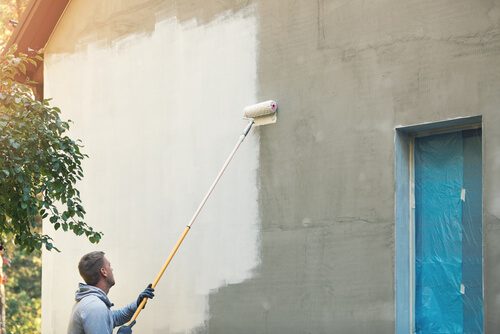
Utilizing texture paint on your walls is among the most straightforward approaches to adding texture to your walls. Using this technique, a plain wall can be transformed into something significantly more engaging in a short time. It’s common to practice using a slap brush when applying textured paint, but you can also use a texture sprayer, a stomp brush, or perhaps a paint roller to get the job done. It is not only simple, but it also does not take very long to spray different textures onto your wall. Several older techniques, such as the popcorn texture and the knockdown texture, are no longer in style; however, a simply painted texture exterior is just an excellent contemporary alternative.
2. Luster with light wall texture colors
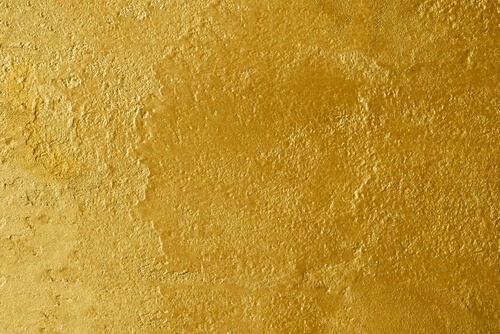
When designing the walls of your ideal home, choosing light colors and giving them a textured finish will give them more visual appeal. Your home’s sound levels will be reduced due to the use of materials that have a rich texture combined with bright colors, which will also give the impression that your home has been around for a very long time and create the look of antiquity.
There would be less of an emphasis on the texture overall. Nevertheless, it would continue to lend an air of calmness to the available space. When a house design is selected considering light wall texture, the result is a flawless look. In addition to this, the surface that was painted with a golden color would become available. If you’ve used the services of a painter in the past and weren’t happy with them or if you’re looking for the best painting partner, then you should check out our customer feedback on products and services, which will assist you before you make a selection regarding the painting of your house.
3. Vertical lines
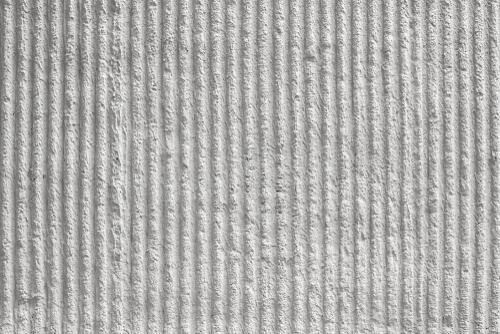
The vertical line is the simplest and most effective choice for exterior wall texture design, especially if the area in question is one in which you would like to give the appearance of height and expansiveness. In addition to providing the wall with more movement, it also creates the illusion of more space, which is especially important in confined and occupied areas. Vertical lines can be made with colors that aren’t overly vivid or striking, and these shades include:
4. Purple Crinkled Royal Texture

Because purple is a noble color, you should use it to accent the walls of your hall if you want it to have a regal look. If you do this, your entrance will look more like a royal palace. The image below depicts an exterior wall texture design for halls with a royal crinkled texture and is ideal for producing an atmosphere befitting a king or queen. The crinkled exterior wall texture design seems quite popular right now, and to achieve this look, you could seek the assistance of professionals or make use of aluminum foil.
5. Stone textured wall
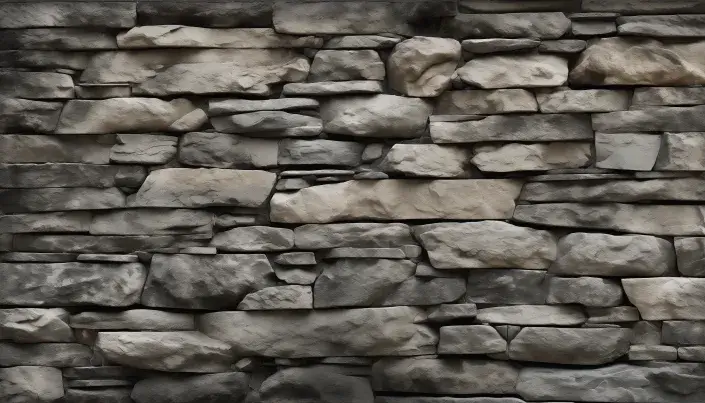
The house’s overall appearance is transformed to look more industrial and lived-in thanks to an exterior stone wall that has been left exposed and painted. A stone wall adds a lot of texture and character to a space while also contributing to its natural appearance. To achieve this look, you can select either genuine stone or stone veneer as your material of choice.
This multifaceted exterior wall texture design is available in a wide variety of colors and is frequently utilized in creating wall designs for interior spaces. Stone would be an insulating material that is resistant to heat, moisture, as well as cold. It can be used in a wide variety of applications. It has an incredible capacity for withstanding punishment. The only drawback is that walls constructed of natural stone are costly.
6. Grasscloth exterior wall texture design
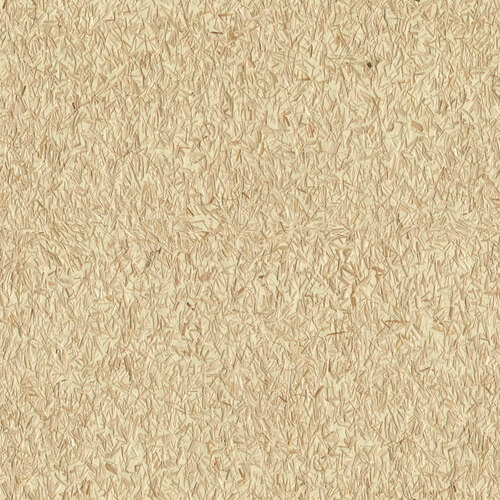
Did you know that grasscloth and other types of woven grass mats, which are popularly used for decorating the interiors of homes, can also be applied to the exteriors of buildings to create exterior wall texture design? Grasscloth is an option that is not only fiscally responsible but also kind to the natural world. Grasscloth is a natural choice for use as wallpaper on exterior walls or pillars, so consider it an option if you’re interested in that sort of thing.
The grasscloth is woven by hand using a variety of natural fibers, including hemp, jute, bamboo, raffia, and arrowroot grass, among its most attractive characteristics. Your home’s exteriors may benefit from the addition of warmth, depth, and vibrancy that grasscloth exterior wall texture designs would provide.
You have the option of picking the colors and patterns you want. Since the grasscloth is made of a delicate material, the only drawback to using it as exterior wallpaper is that it is susceptible to damage from pollution and the weather.
7. Molding Wall Texture

Molding is a great way to add some wonderful drywall texture without needing to put total panels on your plaster walls. Molding is placed instead of total panels to achieve this effect. You could then paint the entire wall with any color you want, making the room appear to have much more character.
Using square patterns throughout the entirety of the surface of your drywall is one of the most common and popular ways to apply molding to your drywall. Since the molding will be relatively light, you would have the ability to create an exterior wall texture design that stands out much more than you’d be able to do with many of the other texture options.
8. Brick wall texture paint

Brick wall texture paints are typically utilized as a means of creating a background that serves as a contrast to the various pieces of furniture and accessories that are present in the room. Although it is an excellent suggestion for the environment, one must not forget to consider the lovely countryside charm it bestows upon the area.
To create these texture paints, you just need essential tools like a paintbrush and a spatula, and the process only takes a short time. This idea for texture paint works well with colors like rusty brown.
9. Cracked And Peeling Texture Design Effect
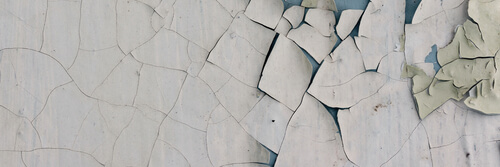
The cracked and peeling effect is yet another rustic design that is sure to win your heart, and it can be produced by utilizing a variety of textures and toolkits while painting. This is the perfect exterior wall texture design effect if you have a spotless house and want to make a meaningful contribution that would wow your guests once they walk inside.
10. Wooden Exterior Wall Texture Design
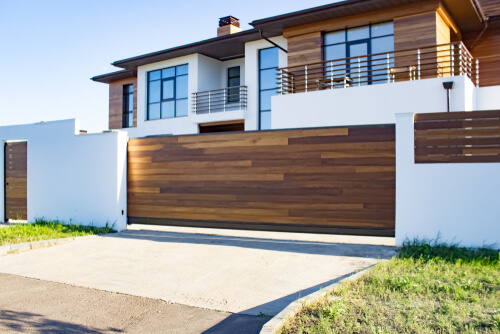
This well-known design for a wall texture found on the exterior has existed for some time. Wood is a renewable material that can be used for wall construction, and it comes in a wide variety of species and types. You can use exterior wood walls with any house design, be it industrial, contemporary, or farmhouse. Walls with a wood texture are straightforward to mend and, in most cases, do not call for the use of heavy machinery.
Nevertheless, wood texture designs are not only susceptible to the accumulation of moisture but also to the risk of being caught on fire. Buying natural hardwood could be a significant financial commitment. If you are looking for something different, there are contemporary exterior wall texture designs that really can replicate the texture of wood.
11. Metallic Exterior Wall Texture Paint
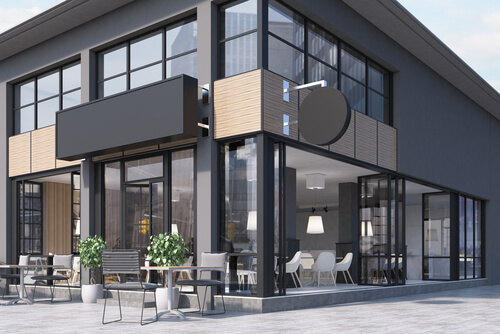
Consider using metallic exterior wall texture paint on your home’s walls if you’re looking for a way to spruce up the appearance of the outside of your property and give it more visual appeal. In addition to providing the same level of protection as traditional paint, this paint can also lend a contemporary and sophisticated air to any residential property.
If you want your home’s exterior to look more authentically Indian, you should try one of these exterior texture design ideas with an Indian house color combination.
12. Seamless Concrete Exterior wall texture designs

Concrete walls that are left unfinished and exposed have seamlessly integrated themselves into the design trends of both interior and exterior spaces. This exterior wall texture design, which has a rugged, incomplete, and naked appearance, can be combined with finished, smooth walls to create a contrast that is both seamless and visually interesting.
This texture design has become increasingly popular for interior walls and has also found a place in multi-textured home facades. In addition to the aesthetic value it contributes, it is long-lasting, adaptable, and resistant to the effects of dust and the elements. Not only do these exterior wall texture designs work well with traditionally designed homes, but they also work well with homes that have modern exterior wall texture designs.
13. Marble finish exterior wall texture design
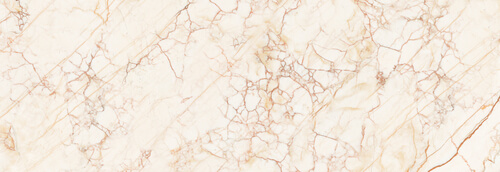
Homeowners in India love the look of marble finishes on their floors and countertops. The sleek appearance that this texture provides is something that many homeowners want for the outside walls of their homes.
Due to marble’s high sophistication and formality, it is an excellent choice for urban and luxurious home design. For those who don’t want to use natural marble, contemporary exterior wall texture design offers an alternative that they can use.
How to Choose an Exterior Wall Paint?
Determining the reason for painting the exterior walls of a building is the first thing that needs to be done before selecting the appropriate paint. Is the purpose of this painting for protection or decoration?
If you are looking for something that will provide protection, the best paint to use would be one that is water-resistant. Your walls will be shielded from the growth of mold, mildew, and fungi, thanks to its application.
Walls with a high-gloss finish would reflect more light and look shinier, but they will also be more challenging to keep clean because of the finish. If you’re going for a more understated look, a low- or no-gloss finish is the way to go.
After deciding what you want the paint to look like and what kind of sheen it should have, the next step is to choose the appropriate color. To make your house stand out from the others on the block, pick a color that harmonizes with the existing colors or go with a color that contrasts them.
Because there is such a wide variety of merchandise on the market today, consumers must do their homework before making the purchase.
Conclusion
Using textures that give the appearance of optical illusions on the exterior walls of your home can be a creative way to provide it with a unique exterior wall texture design and make it stand out from the rest. Several pattern wallpapers with optical illusion designs can assist you in uniquely expressing your creativity and taste.
